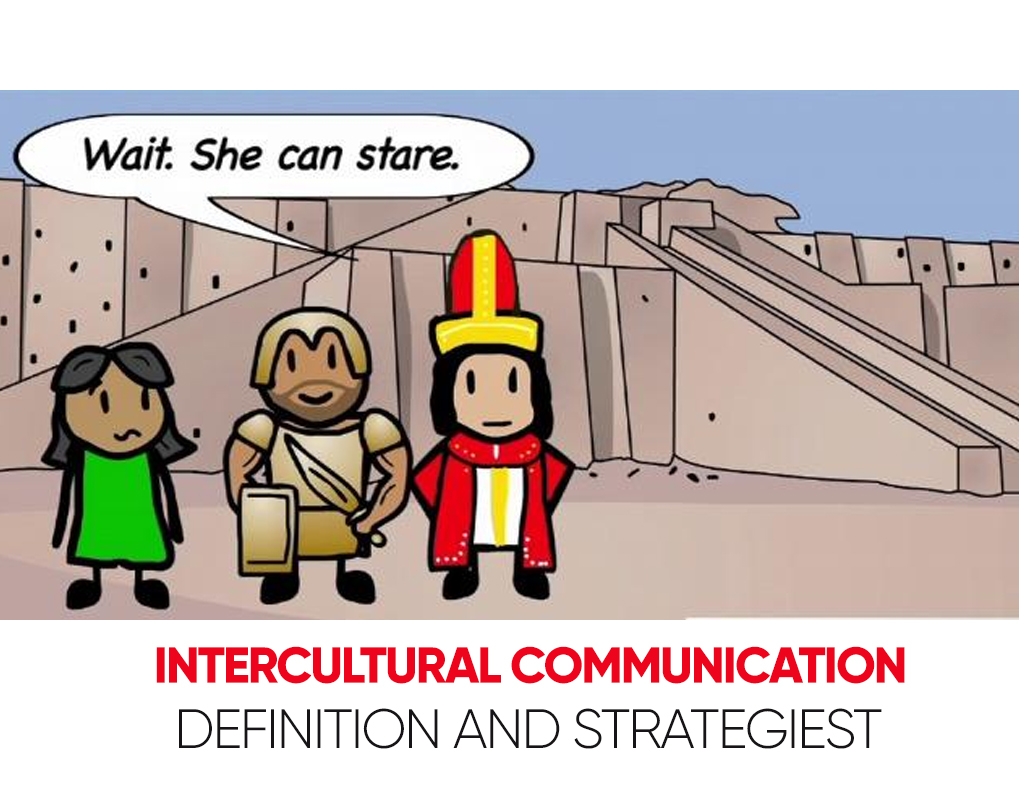Intercultural communication is nonverbal and verbal communication among people from various aesthetic backgrounds. Essentially, ‘inter-‘ is a prefix that indicates ‘within’ and cultural means well, from a culture, so this communication is the interaction between cultures. Seldom, this is used to represent an individual trying to communicate in a foreign atmosphere but more often, it is a 2-way path, where people from both societies are trying to develop their communication.
Now, if you need to study intercultural communication, it’s necessary to understand what this is. But it’s also essential to know what it isn’t. This communication is targeted at allotting for positive and fertile cooperation. You are not entering this culture, you are not growing a member of a different society, and you are not quitting your personal culture. That would be digestion and that’s not what we’re after.
It is also not only word skill. Yes, communication needs the capacity to understand language, but just guess about how much of your interaction with even your own friends is nonverbal: our attitudes, our body language, the rituals from hand-shaking to the stink eye. Few researchers predict that up to 93 percent of all human interaction is nonverbal, although according to new readings, it’s actually closer to 60 percent.
Still, that indicates that more than half of interaction is never spoken. So, intercultural communication is persisting to take much more than just getting a language.
Communication
Communication is great than a pure transmission of knowledge: it is the joint production of meaning. Knowledge is not, in itself, significant; it is only when data is meant and represented in some way that it achieves consequence. For example, if you are saying to me about a film you just noticed, you apparently mean for me to know what the movie is about and also something about your experience and evaluation of it. You posture the knowledge in a language I know, use sources to theories and other movies I might know, and in carrying your spirit you believe that I am able and willing to enter your adventure. For my side, I attempt to evaluate the knowledge in the way you expected it by using general meanings for words and theories and by recognizing both our common experience of related events and the uniqueness of your personal experience in this special event.
Culture
The mean of culture applied in this communication is that of worldview. Culture is a generalization about how a group of individuals coordinates purpose and action among themselves. One approach they do that is through organizations such as spiritual, economic systems and political, and family, and other social formations. But underlying these organizations is a systematic organization of how the world is observed, and thus how it is encountered.
These habits are often pointed to as cultural values and assumptions, and they in all groups, not only national societies. In common, this communication centers on this worldview aspect of culture and not so much on the foundations of culture. Human communication is managed by people, not organizations. The interest of any study of communication is therefore with the way that human beings create meaning. We all are affected by the institutional formations that we internalize as part of socialization, and reading those institutions may give acumen into how we habitually build our opinion, but in the conclusion, it is our human worldview that produces meaning, not institutional formation.

Managing Intercultural Communication
One requires to maintain and adjust oneself with sufficient information in order to interact with people from various some of the ways you can handle intercultural communications are:
- Be aware and culturally sensitive
- Increase awareness of the culture you have to adapt
- Consider what the different person will render before speaking
- Be conscious of non-verbal cues you are giving
- Hear, decode and encode accurately
- Use figures if you do not know words to express it
- Avoid dialect and local language
- Get feedback
Knowledge for Intercultural Communication
Important sections of information for those requiring to enhance their intercultural communication are:
- Some awareness of the cultures, institutions and organizations, history, and common way of living in various communities and nations.
- Notice that these perspectives affect behavioral norms. For instance, there is considerable ‘history’ among the Turks and Greeks, and hence it may be considered potentially a problem to assist Turkish food to a Greek person.
- An opinion of how culture can influence language and communication. For instance, somebody from Nordic countries is often spoken to speak more straight than native English speakers who tend to use more ‘polite’ language. Scandinavians in the UK have summarized offending English people by sinking to state ‘please’ and ‘thank you’ full.
- Some perception of the precepts that may dictate behavior in particular specific intercultural environments, such as opinions on the role of women, or permission (or otherwise) allowed to children.
- Crucially, recognition of your individual and other people’s expectations and utilities, and a willingness to understand when these may clash.
- Sympathy towards cultural conventions that may pretend and interfere with intercultural communication.
FAQs
[wps_faq style=”classic” question=”Q: What is the aim of intercultural communication?”]A: The main goal of this communication is to increase knowledge of culturally mediated communication aspects. Within this object, there are 3 distinct research avenues: culture general, culture-specific, and intercultural interaction.[/wps_faq][wps_faq style=”classic” question=”Q: What are some instances of intercultural communication?”]A: Language variety makes international business organizations hard to adjust to the local environment and culture. For example, the Coca-Cola Company earlier proposed to get a phonetic equivalent of their trademark to be used in China and thought of practicing KeKou-KeLa.[/wps_faq][wps_faq style=”classic” question=”Q: What are the main difficulties of intercultural communication?”]A: As each culture does have its own different viewpoints, intercultural communication can be a cause of friction and confusion. There are three major difficulties at the top of the problem of miscommunication of intercultural: language as cultural diversity, ethnocentricity, and barrier.[/wps_faq]
Conclusion
Cross-cultural or intercultural communication relates to communication between individuals and societies of various cultural backgrounds. In business, this includes understanding several professional beliefs, norms, perceptions and mentalities, and communication policies. Everything from gestures, language, mannerisms, customs, and systems of power and authority can vary within cultures.


